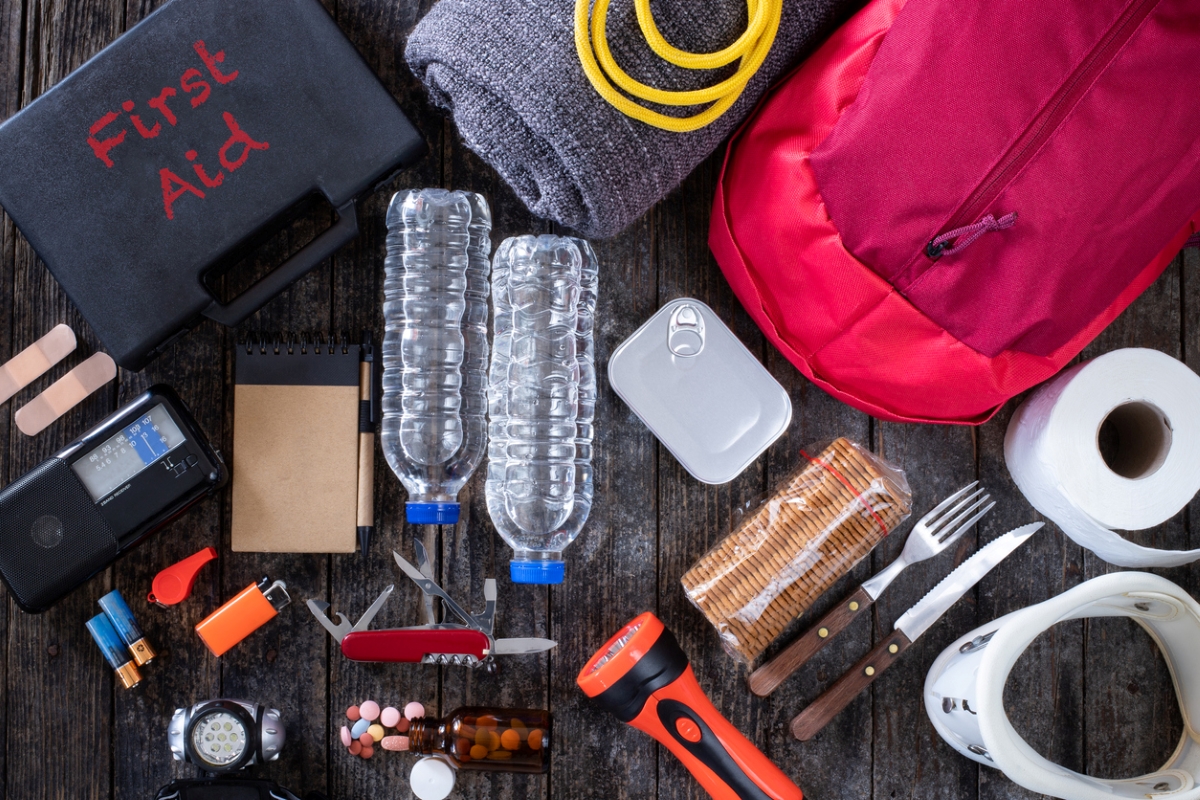We may earn revenue from the products available on this page and participate in affiliate programs. Learn More ›
When disaster strikes, will you be ready? Experts in disaster relief and fire prevention and management recommend having a bug-out bag ready to grab at a moment’s notice. So, what is a bug-out bag? A bug-out bag, also known as a BOB bag, grab bag, go bag, survival kit, PERK (personal emergency relocation kit), 72-hour bag, and GOOD (get out of Dodge) bag, is an emergency kit designed to hold all the essentials you and your family will need if you have to “bug out” quickly because of a wildfire, natural disaster, or other unexpected event. Use our checklist as you think about what to put in a bug-out bag, and make sure you’re prepared to survive on your own for a few days.
The Bag

Start with a good-quality bag. By the time it’s loaded with all of the necessary items, it will be heavy and probably packed to the max. Fabrics like ripstop nylon and Cordura are extremely tough, and bags made from these materials will usually hold quite a bit of weight. Also, padded straps will help make the bag comfortable to carry despite the weight.
Another consideration is optics. You don’t want your BOB to stand out like a sore thumb. Military-style webbing and attachments are dead giveaways, so go with something a bit more subdued. The 5.11 Tactical Covrt18 is a great choice, mild-mannered in appearance yet durable.
Survival Essentials
Wondering what to put in a bug-out bag? Everyone’s kit will be a little bit different, depending on things like the climate you live in, and whether you live in a rural or urban environment, or somewhere in between. This emergency go-bag checklist includes our recommendations for the very basics. While a kit containing all of these items won’t be complete, it’s a great start.
Fire-Starting Equipment
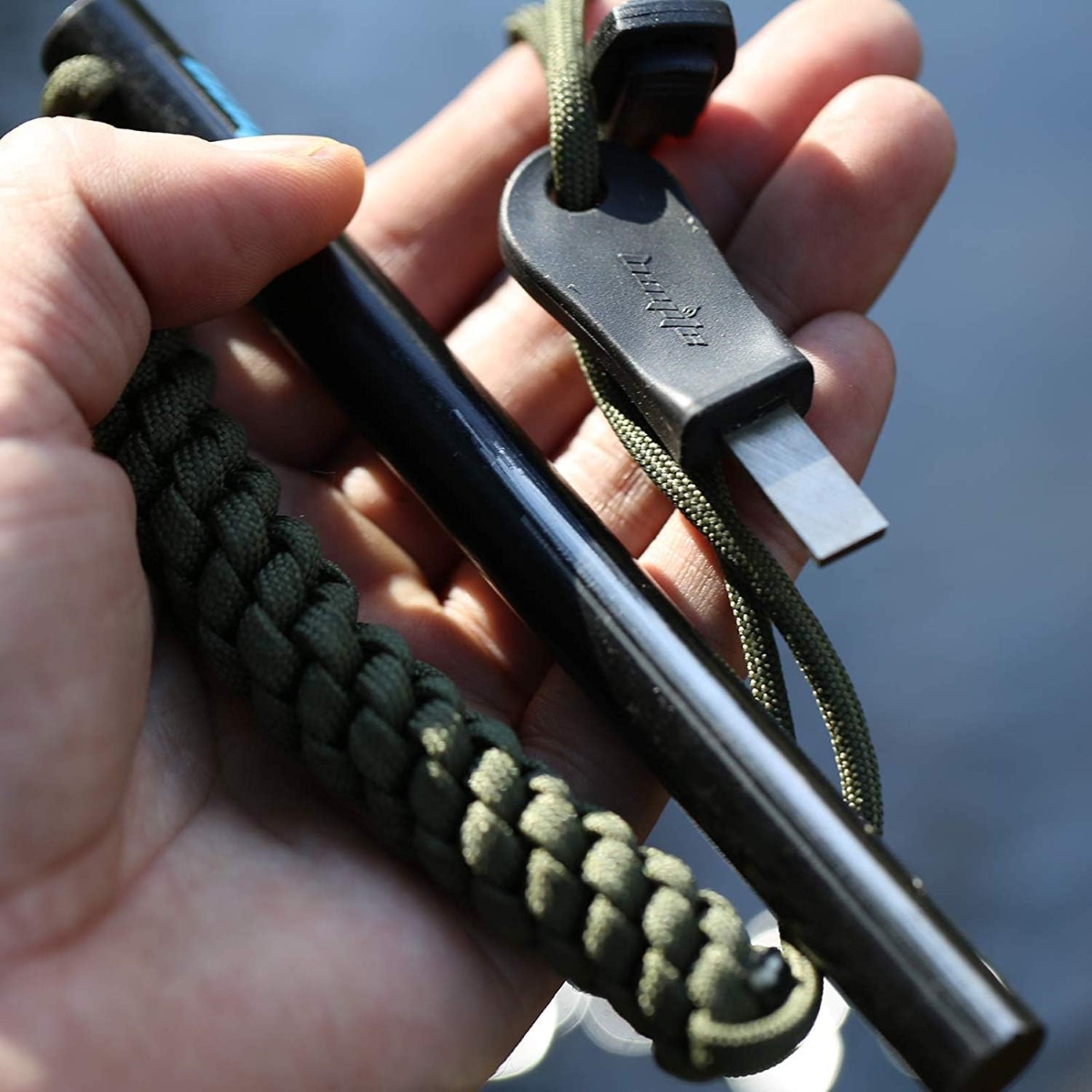
Having fire-starting equipment available in a bug-out bag can help keep your group warm and safe at night. Equipment to consider are matches, lighters, and a fire starter like the Bayite 6-inch Survival Drilled Flint Ferro Rod. It’s also a great idea to have some dryer lint available, or cotton balls soaked in petroleum jelly. These items burn quickly and intensely, and they can get a fire going in a hurry.
A Full-Tang Knife
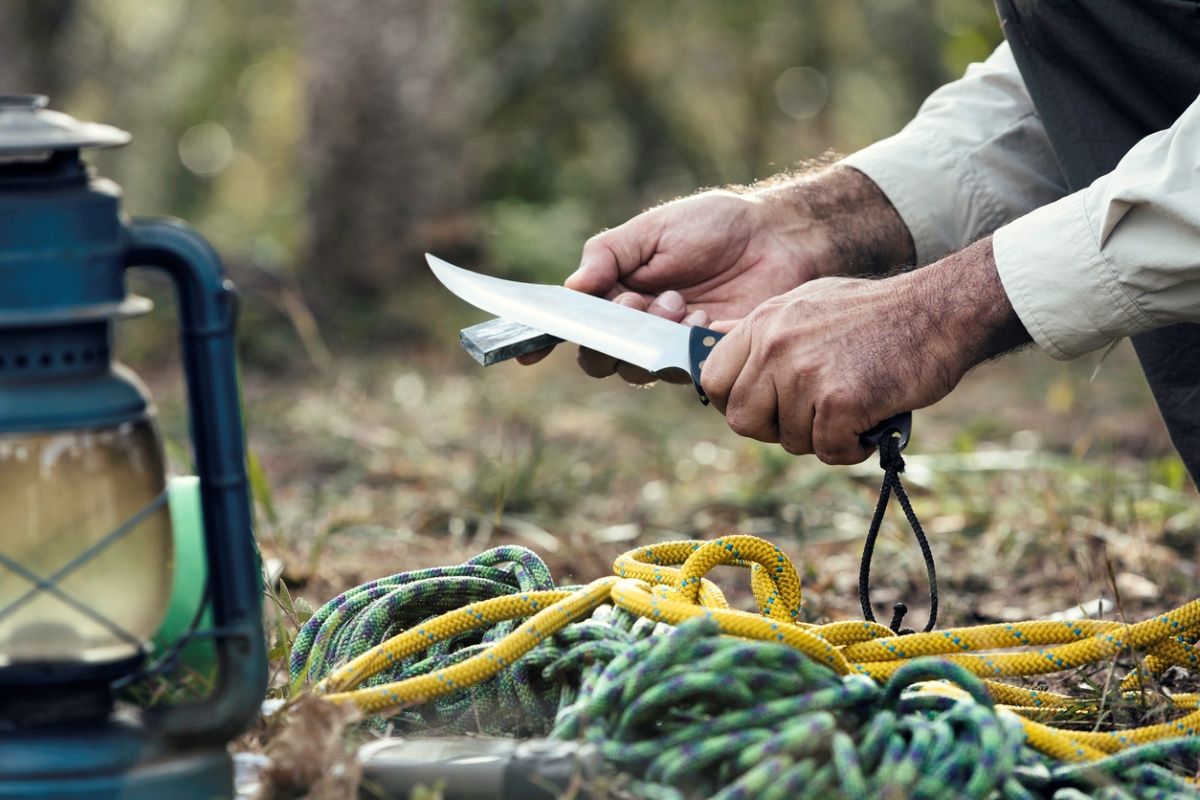
There’s no telling when you might need a full-tag knife in a bug-out scenario. But when the moment comes, the knife needs to be a good one—$10 survival knives won’t cut it! “Full-tang” refers to a knife that does not fold (no pocket knives here) and has a single piece of metal that runs from the tip of the blade through the hilt to the butt of the handle. They’re solid, one-piece designs that won’t fail when you need them. Our choices? The Gerber Strongarm or, if the budget allows, the Ka-Bar Fighting Knife.
GPS or Compass

In today’s day and age, everyone has a GPS on their phone or smartwatch. However, keeping a separate GPS in a bag ensures you’re ready for whatever might happen. Garmin makes some of the best personal GPS tools to help keep you on track.
And, while compass navigation can be tricky without experience (or a map designed for it), it’s still a good idea to keep one in your BOB.
Water Filter

You can go a long time without food, but water is an absolute necessity. And, when there’s no telling if the water that’s available is clean or not, the risks may seriously outweigh the rewards. But you can hedge your bets with a high-quality water filtration system like a LifeStraw. These filters protect against 99.9999 percent of bacteria and don’t take up a lot of room in a backpack. Water purification tablets are also a great idea to keep in your bag. These tablets can kill germs and bacteria, making water from questionable sources safer to drink.
First Aid Kit and Medical Supplies
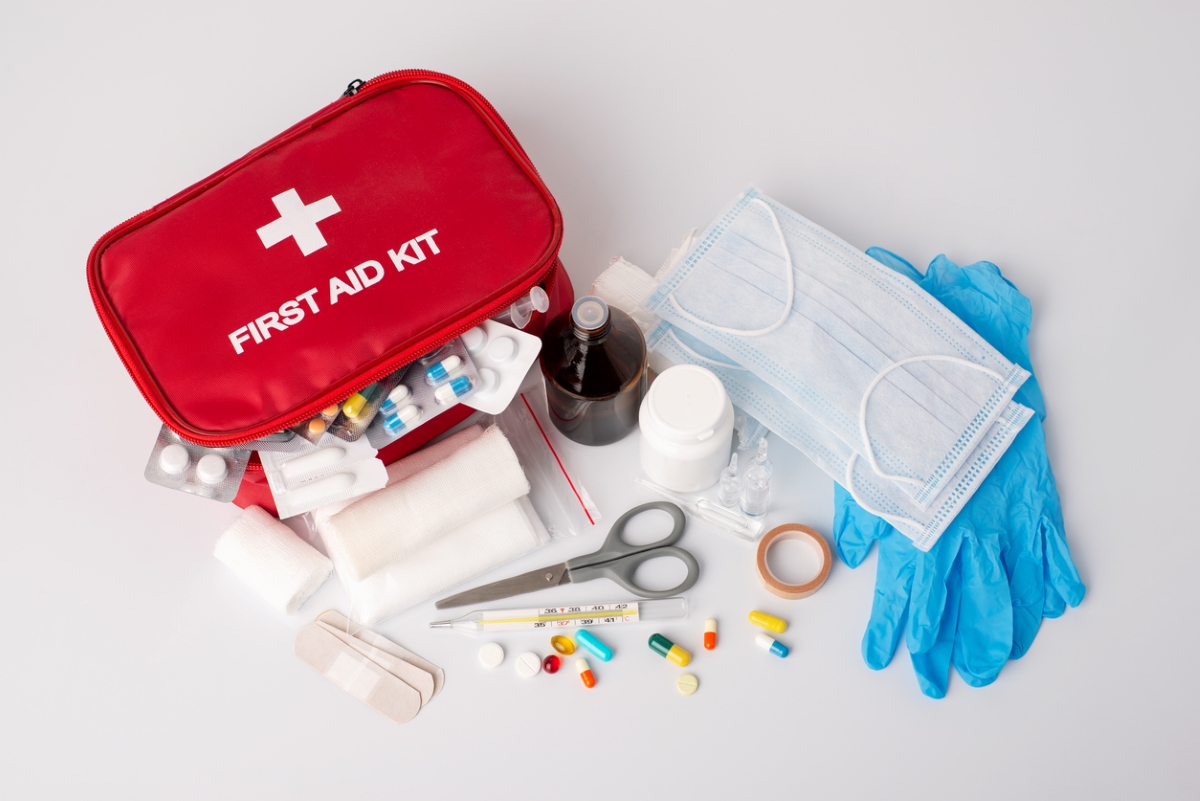
A first aid kit can help you attend to minor injuries and keep each member of the family safe until help arrives. The American Red Cross recommends a large first aid kit with essential supplies, such as gauze, antiseptic cleaning wipes, triple antibiotic ointment, adhesive bandages, sling bandages, and cold compresses. In addition to a first aid kit, don’t forget to pack other essential medical supplies like hearing aids and extra batteries, contact lenses, glasses, and mobility devices.
Tourniquet
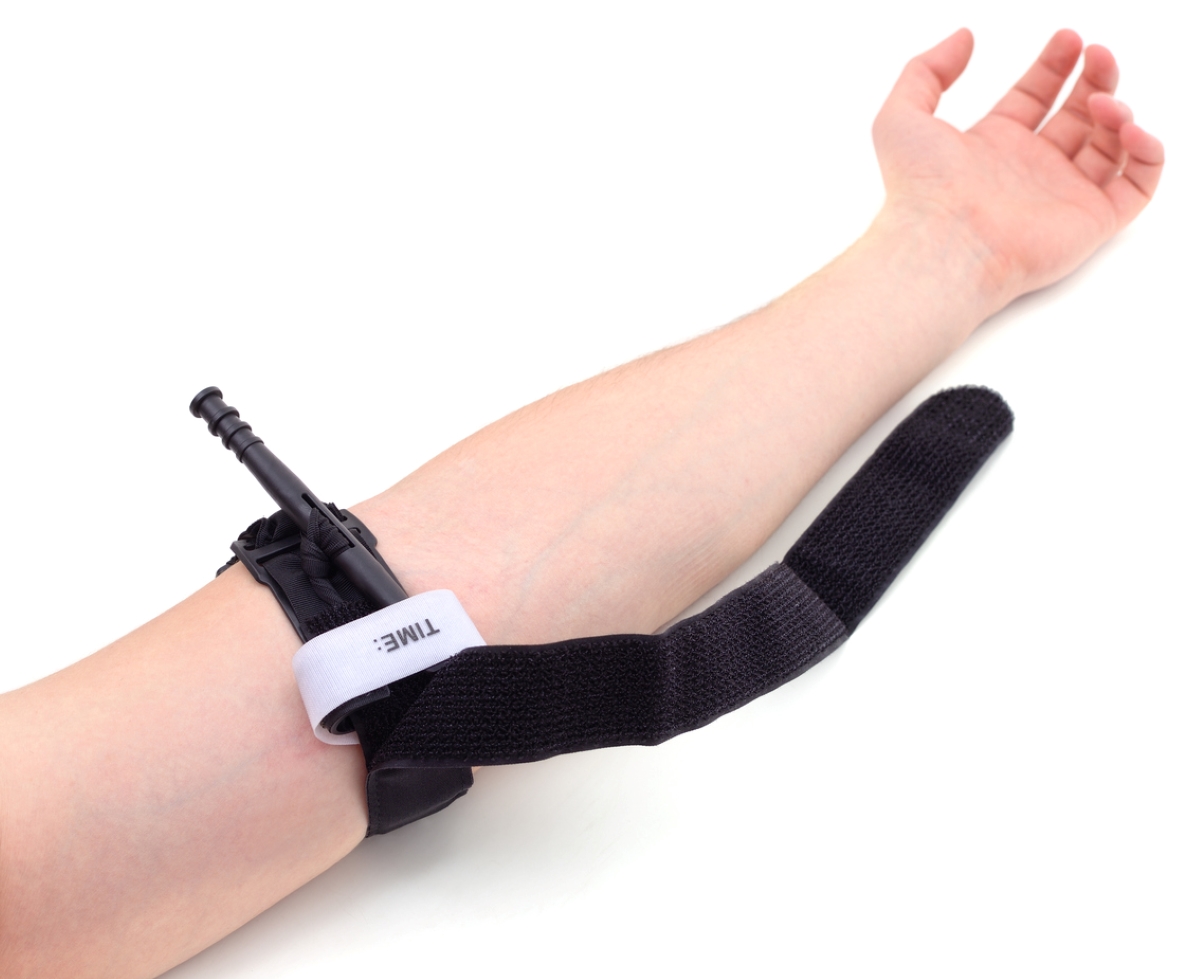
No one plans to get injured, but there are some injuries that you need to plan for to survive. Serious injuries to the limbs can cause excessive bleeding and eventual death, but a tourniquet can stop the bleeding. While you can fashion one from fabric and a stick, having the real thing is much better—they’re a lot easier to apply, especially in an emergency situation.
Communication
Checking on loved ones, staying in touch with other people in your party, and being able to call for help are critical in an emergency. These bug-out communication tools will help you stay in contact.
Emergency Contact Information
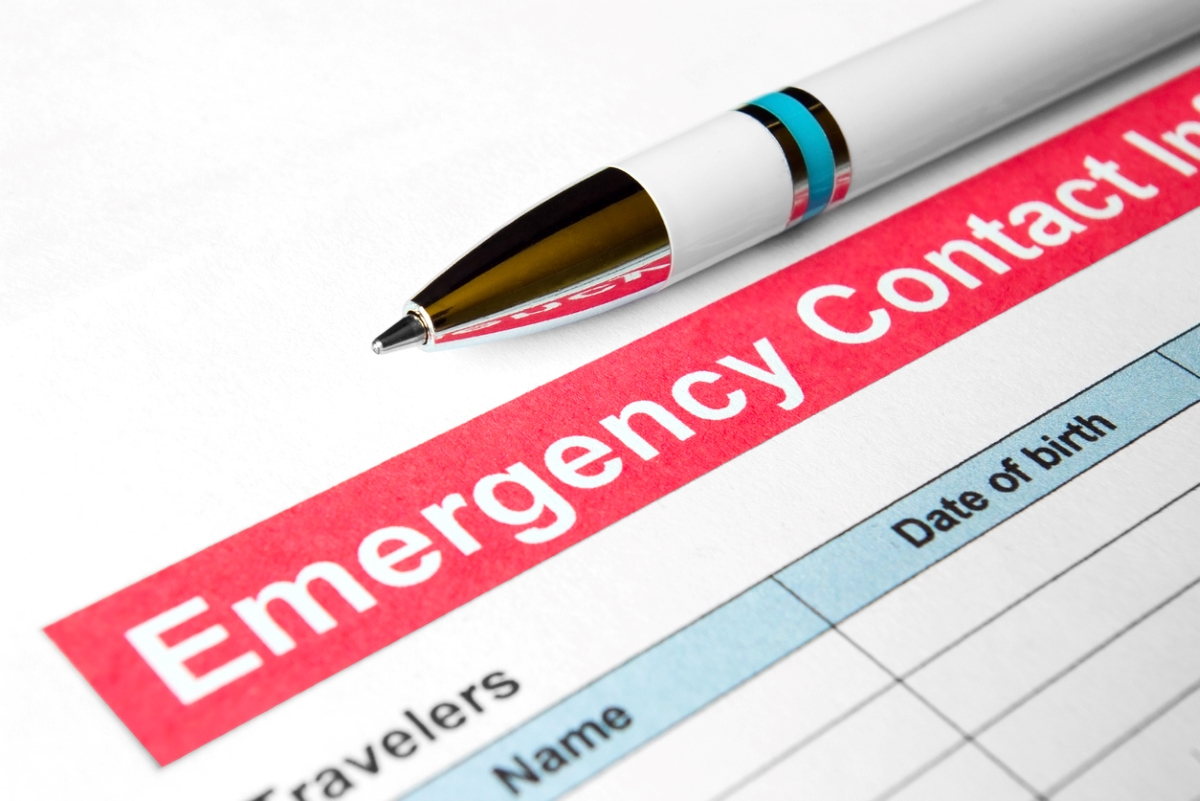
It’s important to program emergency numbers and contact information for friends and family into a cell phone, but it won’t help you if the cell phone’s battery dies or the phone gets lost. You should also have a hard copy of this information n your bug-out bag to make sure you’re able to reach these individuals. If you can laminate the page to protect it from the elements, all the better.
Whistle

It can be challenging for rescuers to locate individuals who may be trapped or in need of assistance. Yells aren’t always loud enough for emergency responders to hear. Ready.gov recommends including a whistle in your go bag to signal when you need help. An emergency whistle can emit sounds at around 120 decibels, which is loud enough to alert a rescue team to your location.
Hand-Crank or Battery-Powered Radio

Power lines go down, and cellular signals are often unreliable during wildfires and other natural disasters. Including a hand-crank or battery-powered radio in your bug-out kit will make it possible to check on weather alerts, evacuation routes, and other information that could be the difference between life and death. The California Fire Prevention Organization highlights the NOAA Weather Radio as a top choice for go bags.
Cell Phone and Charger
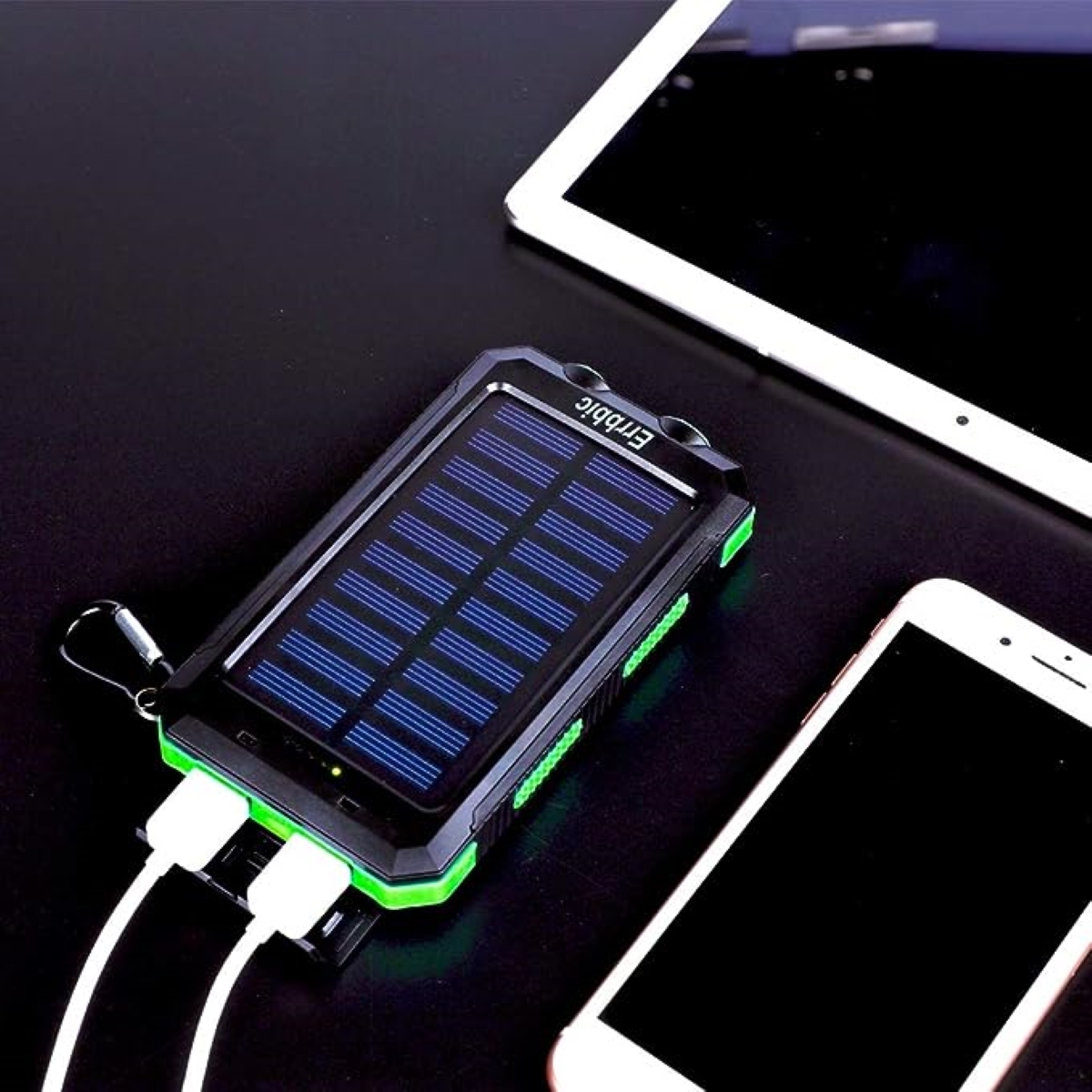
Never leave in an emergency without your cell phone. Program the numbers of your emergency contacts, friends and family, and any other phone numbers you may need. Add a power bank and charging cables to your bug-out bag as well to keep the phone charged and ready for use, even when you don’t have access to traditional forms of power.
RELATED: The 37 Best Gifts Under $50, Handpicked by the Bob Vila Team for the Holidays
Shelter & Bedding
Your vehicle may be the next best thing to a home, but you should still stock up on some other shelter items that can keep you safe and more comfortable. Be ready, too, for scenarios in which you’re traveling on foot, and have to build makeshift shelters outdoors.
Duct Tape and Plastic Sheeting
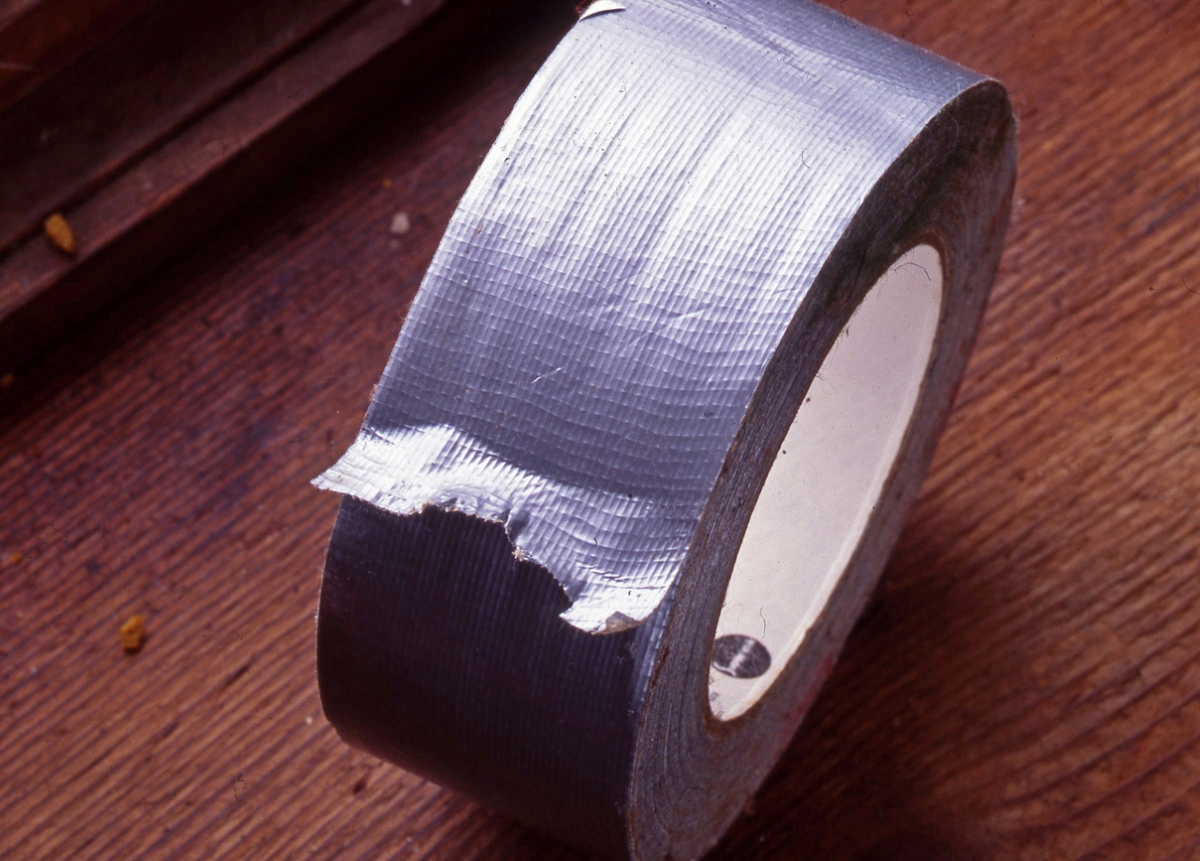
Duct tape, which is strong and water-resistant, offers a plethora of uses that could come in handy during an emergency: repairing shoes, making a splint, repairing a leaking container, marking a path, creating a rope, and resealing packages. When you pair duct tape with plastic sheeting, you can even create a makeshift shelter.
Emergency Blanket
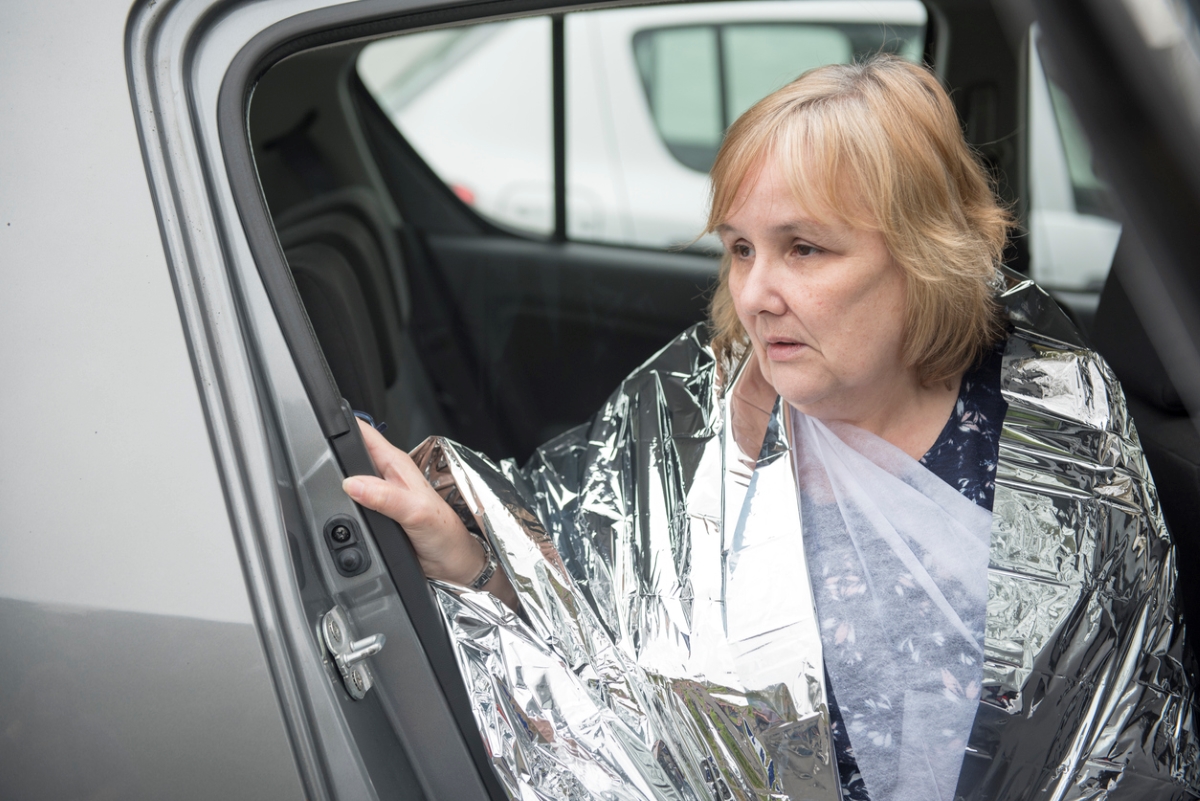
Emergency blankets, which are also called weather blankets or thermal blankets, can be used for much more than just keeping warm and should be included on every survival checklist. This essential item can offer protection from the elements, be used to reflect light and signal for help, and serve as an improvised tourniquet, compression bandage, or splint. The California Fire Protection Organization recommends choosing a lightweight mylar blanket that won’t take up much space or add a lot of weight to a go bag.
Tarp
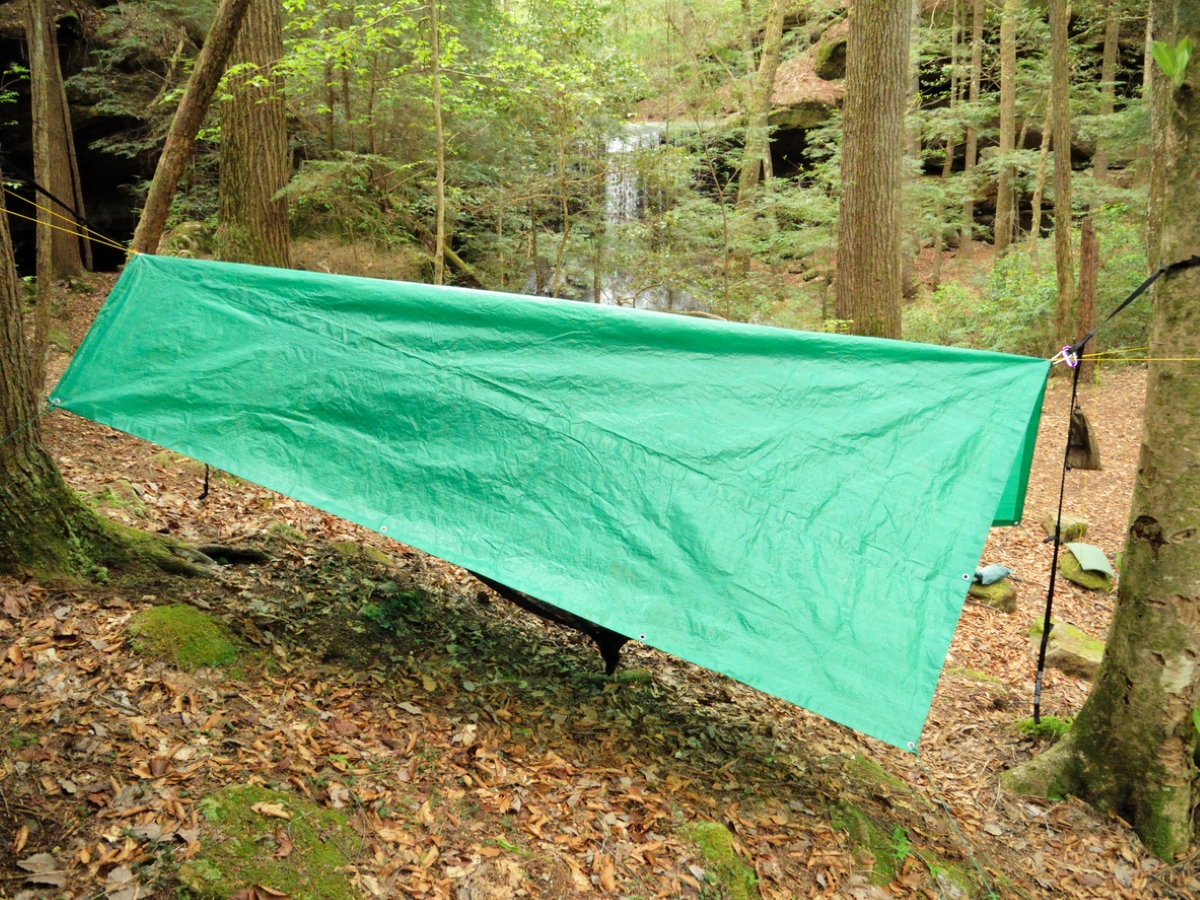
Tarps can serve so many purposes in a bug-out scenario, so it’s definitely worth keeping one in your bag. They can become tents, blankets, shelter from rain, or even water collection tools. They’re cheap and lightweight, and they can literally save a life. If folded correctly, a standard tarp also won’t take up a lot of space in a bug-out bag.
Clothing
Without the right clothing, you could be dangerously exposed to the elements. These items should definitely make it into a bug-out bag.
Bandana
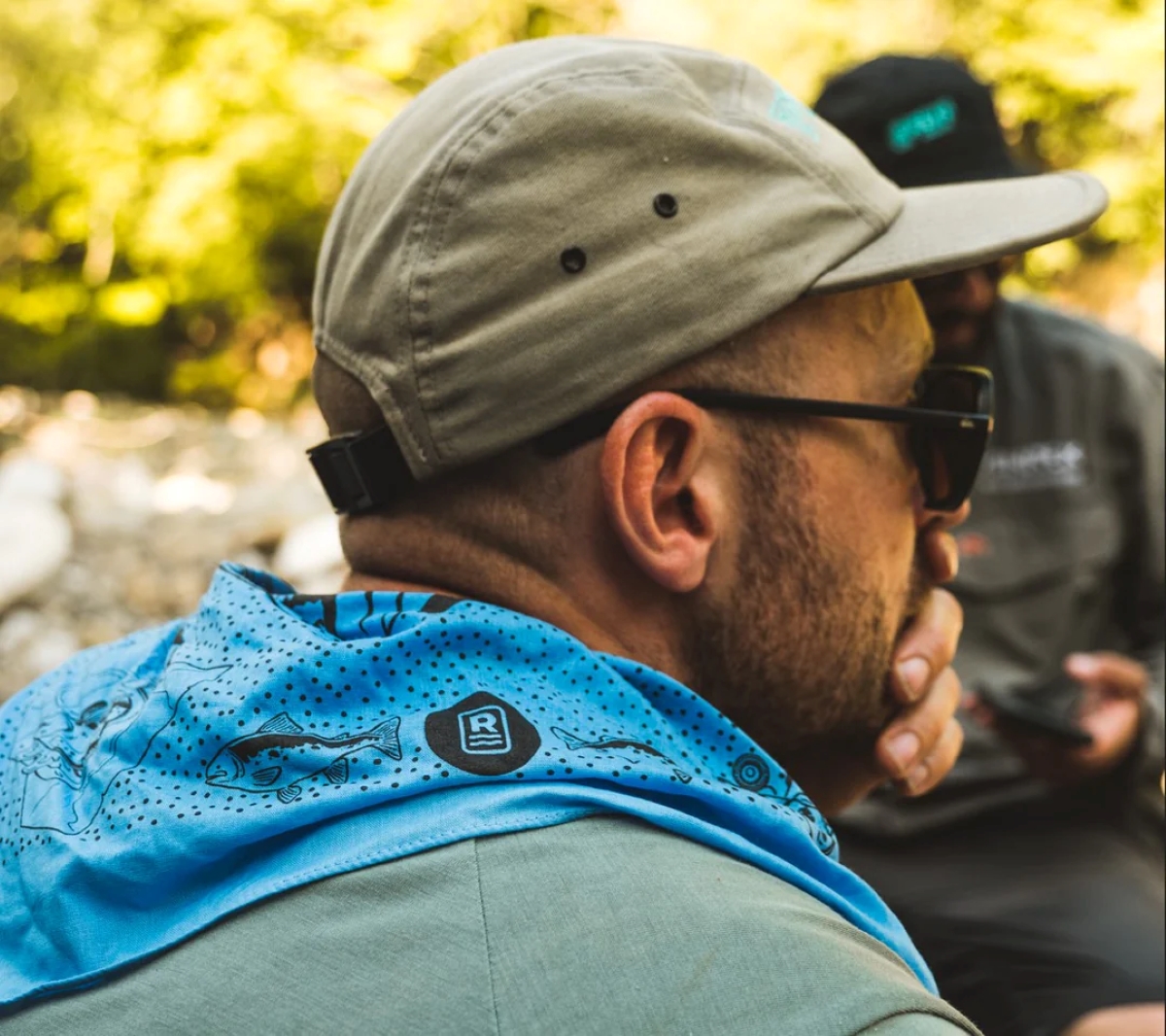
There are a lot of ways that bandannas can come in handy in a survival or bug-out situation: They can serve as dust masks, be used for bathing, protect the back of the neck from sun, be fashioned into a tourniquet, serve as a weapon (just place a rock inside), mark trails, attract attention, and much more. Inexperienced preppers might consider UST’s survival bandana, which has has survival advice printed on it.
Extra Clothes
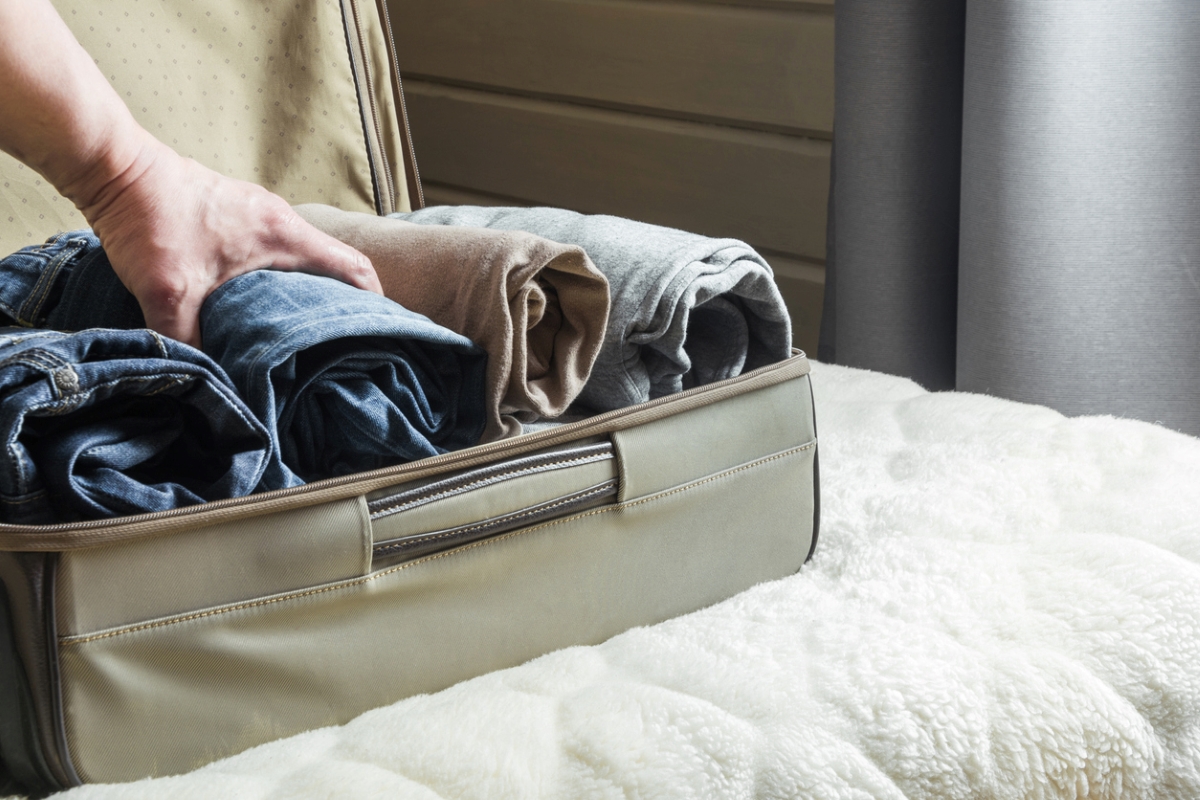
Extra clothes are another must for your go pack. In an emergency, you can certainly re-wear an outfit a few times, but a change of clothing will still be necessary in the event your clothes get ripped, wet, or dirty. Durable wool socks, like those made by Darn Tough, are a must, particularly if you are traveling on foot.
Pack a few changes of clothing for each member of the family, opting for lightweight and compact items that won’t take up much space in the bag. When selecting outfits, choose ones that will help you prepare for a range of temperatures and weather types since you don’t know what the weather will be when you need to grab your bag and run.
Defense
This isn’t fun to think about, but there can be instances during a bug-out situation where people need to defend themselves or their party. Consider whether adding one of the following items to your go bag make sense for your situation.
Pocket Knife
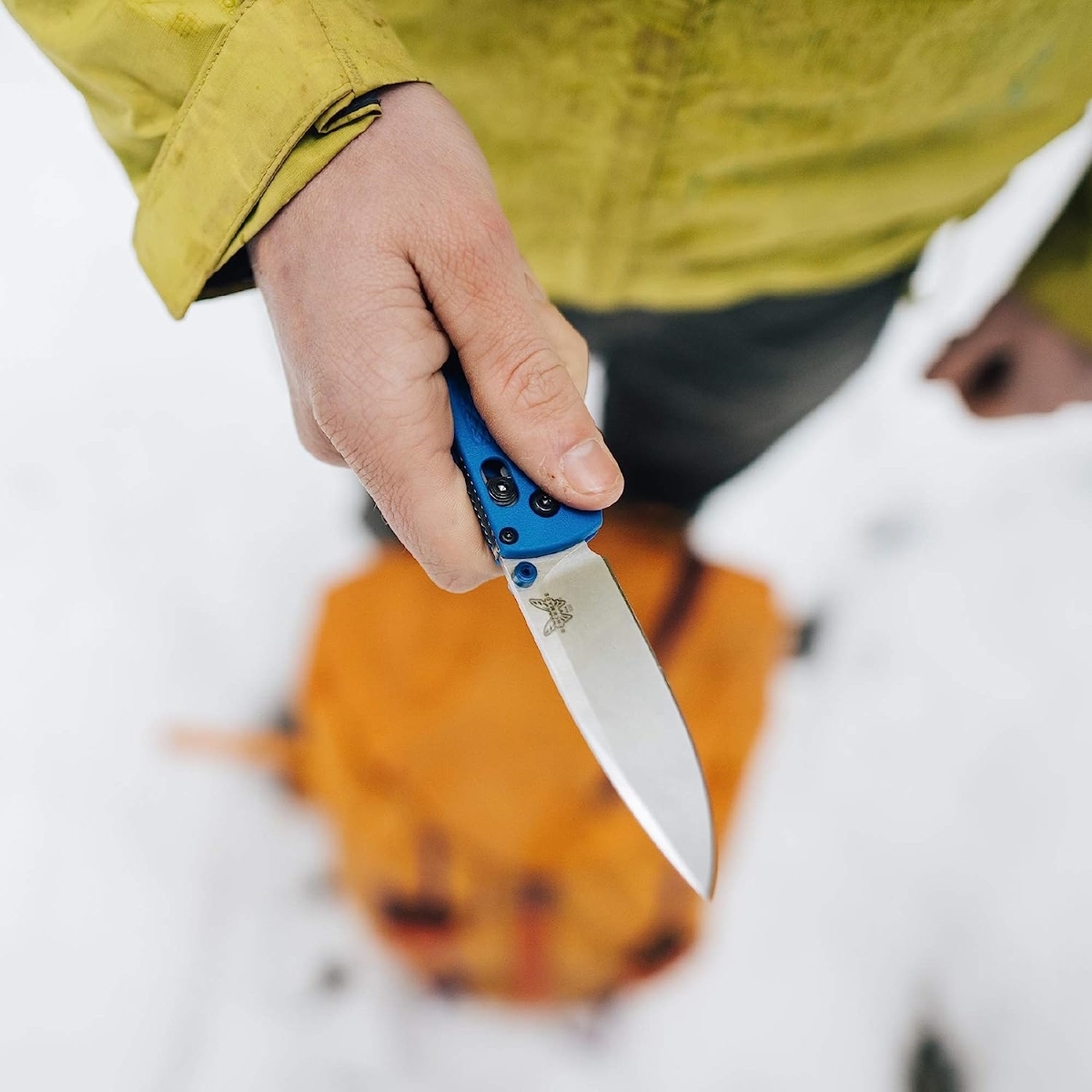
Keeping a reliable pocket knife in your bag ensures you’ll have one to place in your pocket if things get ugly. Knives we trust in these situations are the OKC Rat, the aptly named Benchmade Bugout, the Kershaw Brawler, the Spyderco Para 3, and the CRKT M16.
Pepper Spray
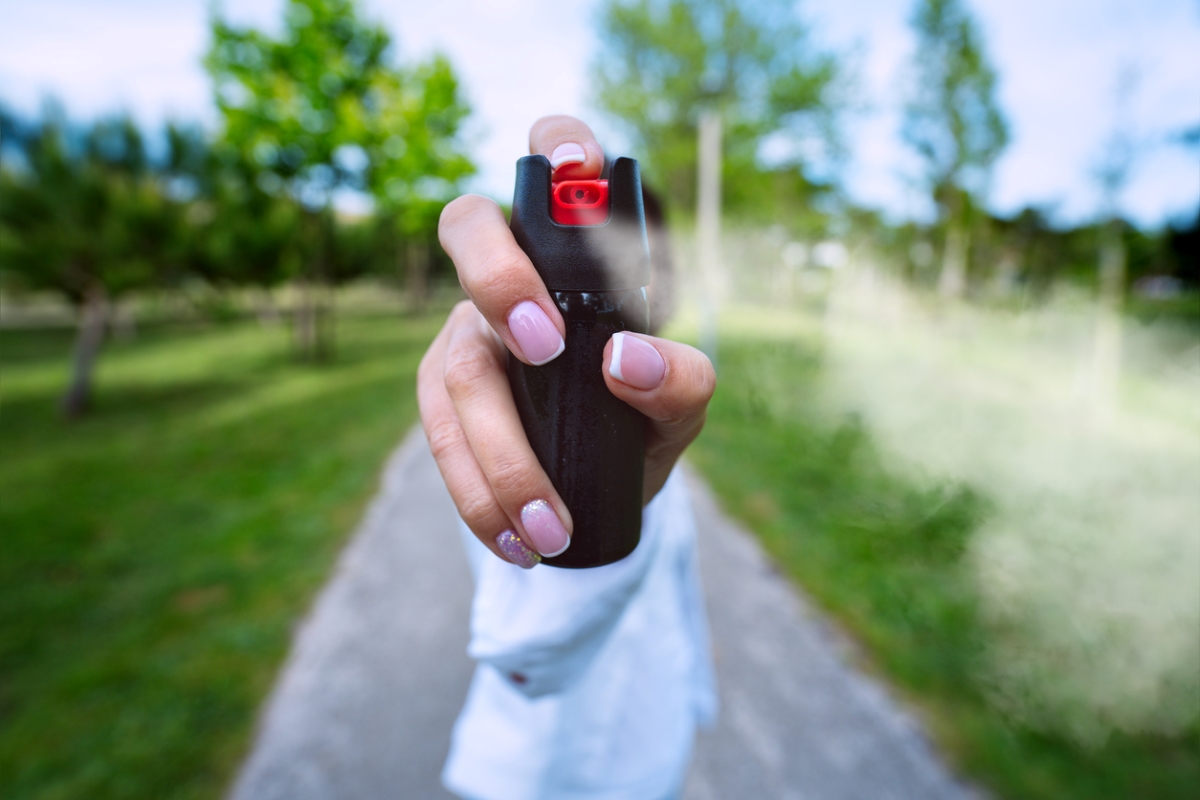
If you’re legally allowed to carry pepper spray, it’s a good idea to pack some in your BOB. Pepper spray, when deployed correctly, can be extremely effective at stopping or disorienting attackers, allowing you to put some space between you and the assailant. Alternatively, you can pack a can of bear spray, which is essentially the same thing but has a much longer range.
Health & Hygiene
Staying safe requires keeping yourself healthy—and healthy enough to be of assistance to others. These health and hygiene items will help.
Dust Mask
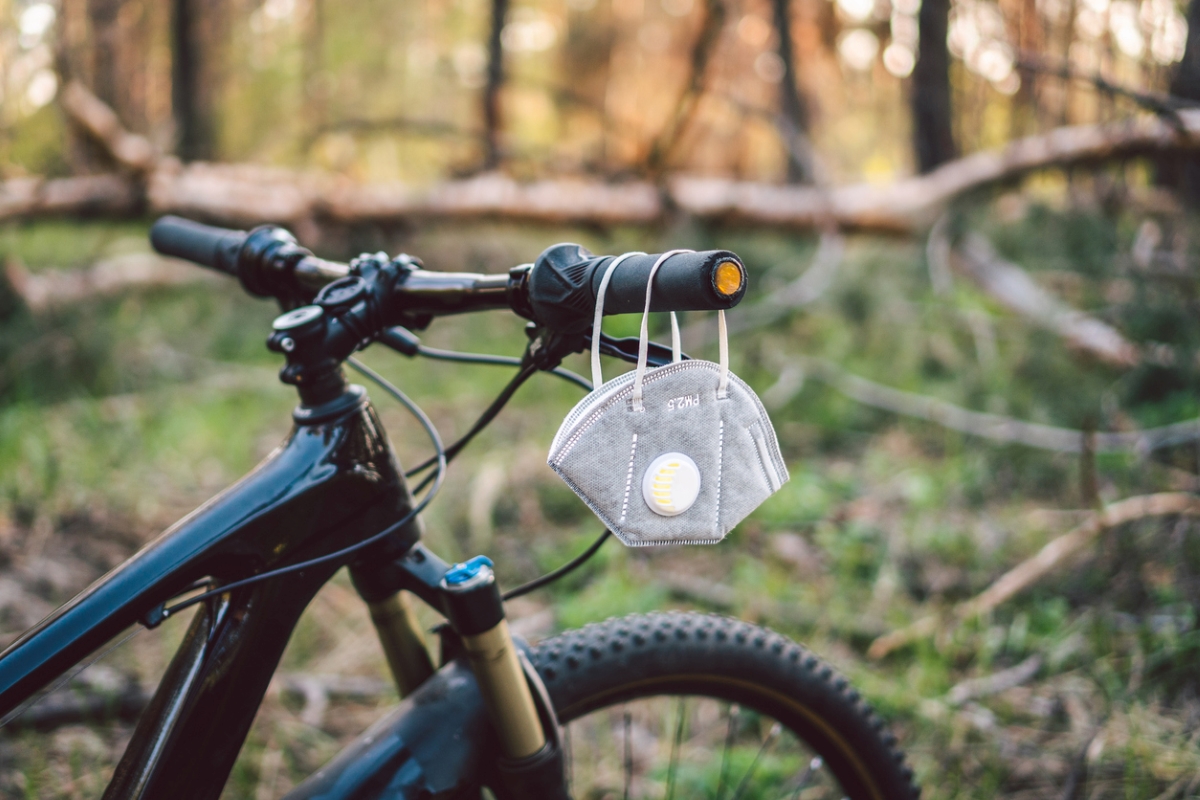
In a wildfire emergency, the air may be contaminated with harmful particles (not to mention heavy smoke). Respirator masks cover both the mouth and nose to prevent you from breathing in those harmful particles. The best respirator masks are approved and tested by the National Institute of Occupational Safety and Health (NIOSH), provide a tight seal around the nose and mouth, and have two straps to hold the mask securely in place.
Personal Hygiene Essentials
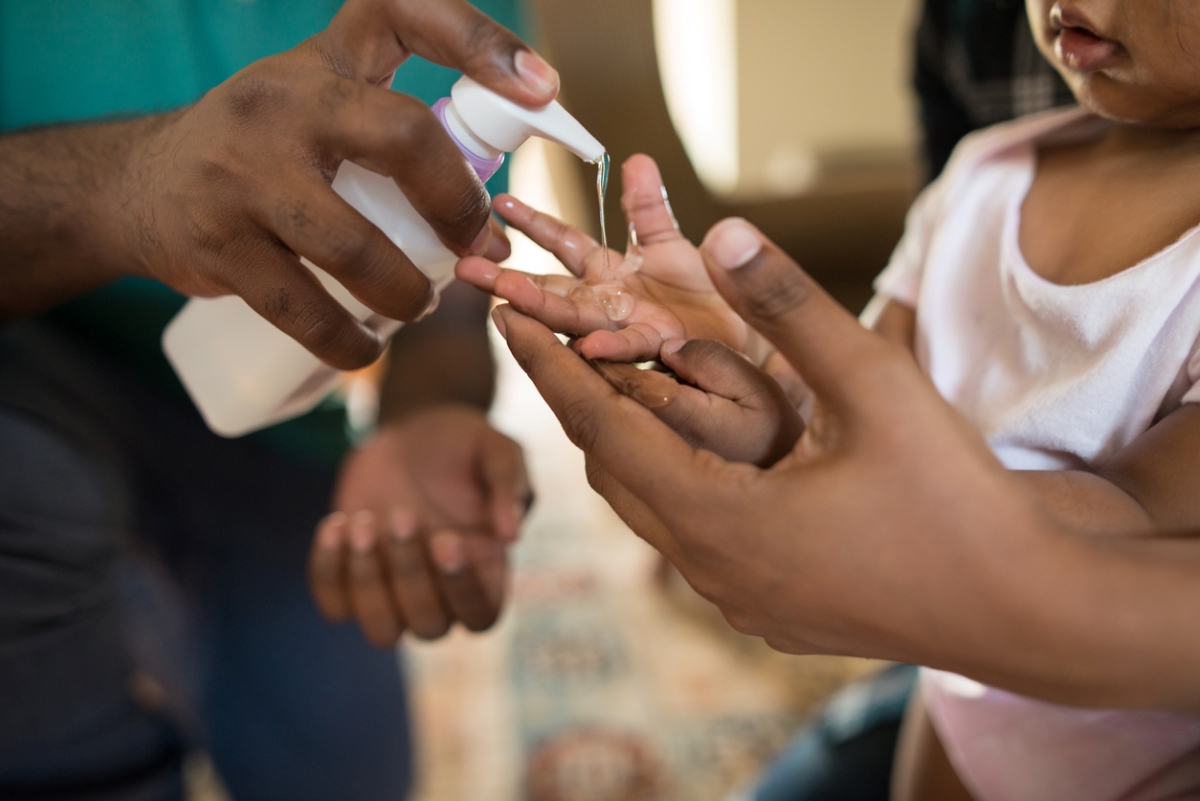
Personal hygiene items are key in any emergency situation—there’s no telling what you’ll have access to at your destination, or on the way to it. Make sure your bag contains items such as:
You may or may not have access to running water in the event of an emergency, so keep this in mind when shopping for items for your emergency kit.
Medication

Pack any prescription medications that you or others in the house will need access to. Many prescription medications are lifesaving, and you don’t want to be without them if you’re forced to leave your home. The American Red Cross urges individuals to pack at least a 7-day supply of medications to ensure that everyone has what they need until they’re able to seek medical help.
Baby and/or Pet Supplies
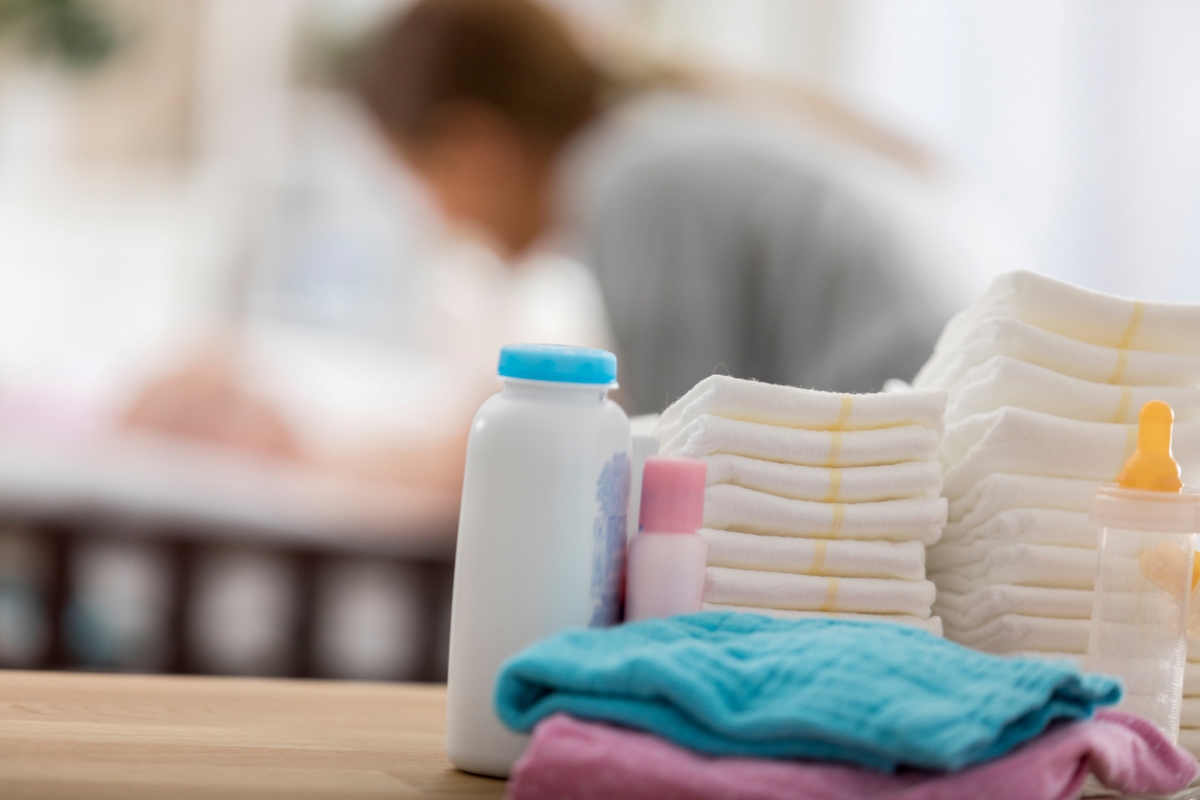
If you have a baby or pet, don’t forget to pack the essentials that they will need in the bug-out bag. Living With Fire suggests including the following items for babies:
Pet supplies you may want to pack include:
Don’t forget to also include a picture of your pet in the bug-out bag, which can be shared with rescue teams in the event your pet gets lost. (A photo of you with Fido is a particularly good idea, because it is evidence of ownership.)
Tools & Light
Being able to see, build, or fix can be the difference between staying safe and being in serious danger. Here’s what you need.
Flashlight

With natural disasters and fires, you may be trapped outside or in an area with no power. Having a flashlight like the Olight Perun will make it possible to see in the dark. It also has a multipurpose clip users can attach to their shirt pocket, and a headband for convenience.
Multipurpose Tool
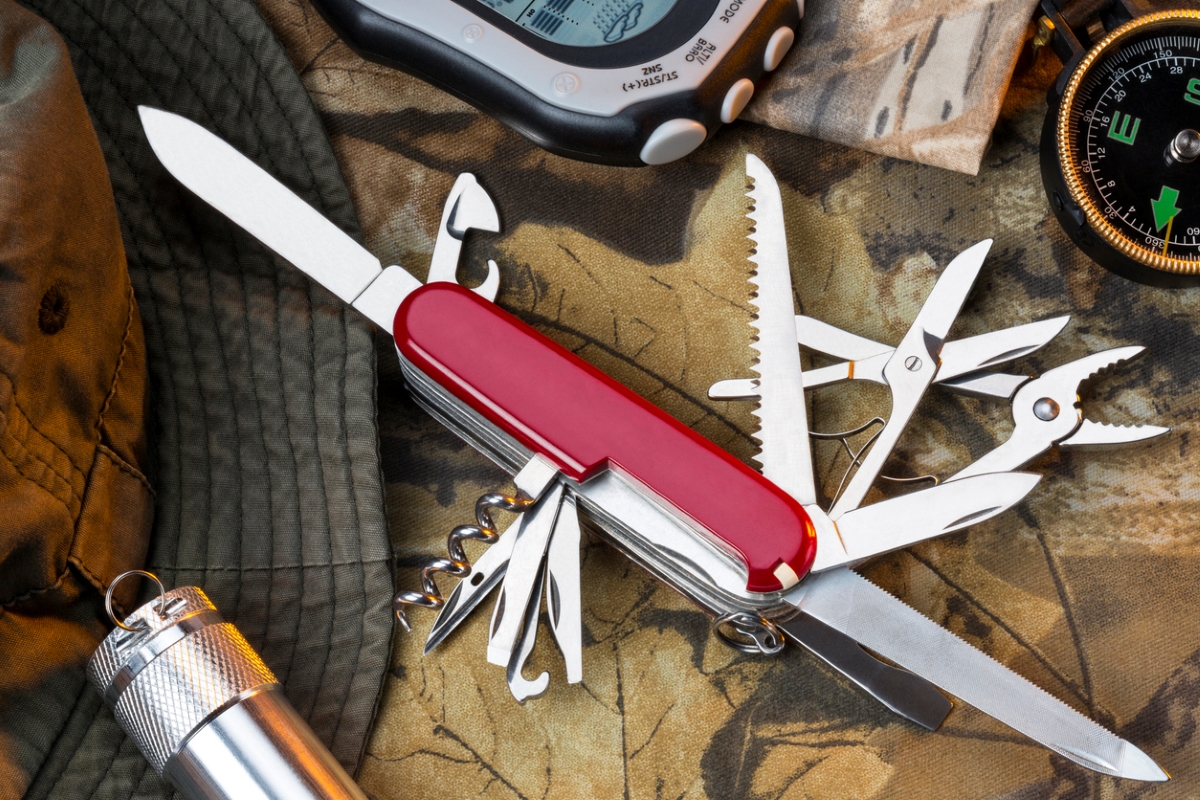
As the name suggests, a multipurpose tool can be used in a variety of ways during an emergency. These compact devices include numerous accessories, such as pliers, knife blades, saws, screwdrivers, scissors, and wire strippers. A multipurpose tool gives you access to an arsenal of tools and takes up hardly any space in your bug-out bag.
Camp Shovel
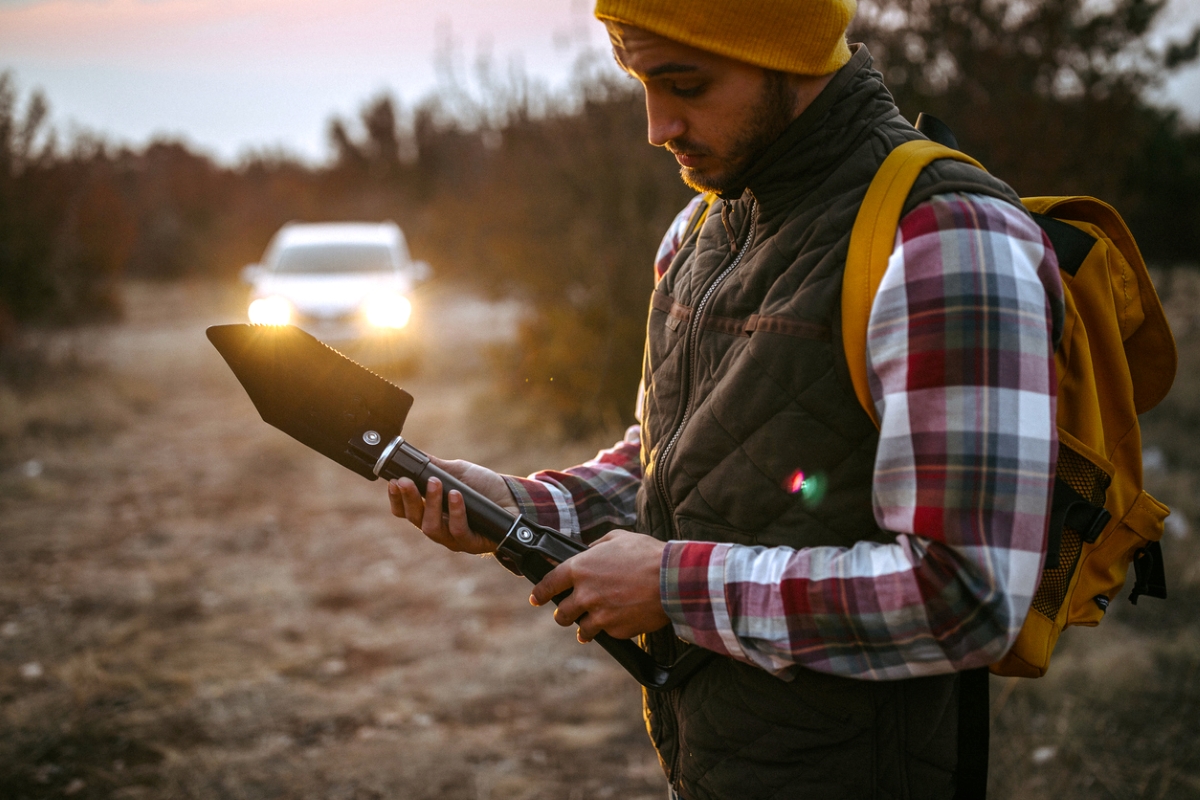
A camp shovel, or trenching shovel, is a great tool to throw in a bugout bag. These shovels are compact, but they can dig holes for trapping, building a survival shelter, or digging a car out of a snow bank. They also feature serrated edges that can be used to cut wood. SOG makes a traditional trenching shovel that weighs about 1.5 pounds, so it shouldn’t be too heavy for an emergency pack.
RELATED: 15 Things You Should Never Do When the Power Goes Out
Food & Water
Having the fuel your body needs to keep moving is critical in a survival situation.
Water
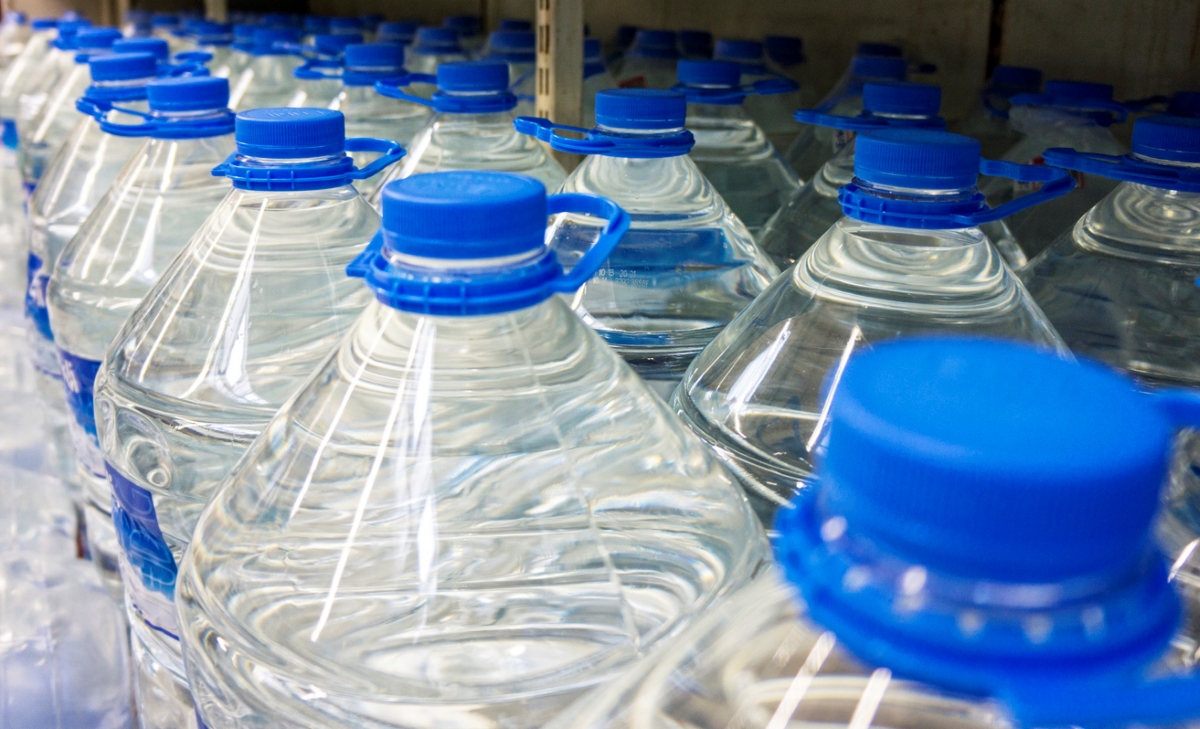
Ready.gov puts water first on their list of the items individuals should add to their bug-out bag. They recommend having 1 gallon of water for each person in the family per day and packing enough water to last for several days. So, a family of four should pack at least 12 gallons of water (4 gallons per day to last 3 days). This water will serve as drinking water and can also be used for sanitation and personal hygiene.
Nonperishable Food

Packing food in a bug-out bag is also imperative. ReadyforWildfire.org recommends including enough nonperishable food items to last for at least 3 days. Energy bars, trail mix, and other high-protein foods are good picks. You may also consider bringing along Meals-Ready-to-Eat, or MREs, and meal-replacement shakes to have some higher-calorie options to provide sufficient energy while waiting for help.
Miscellaneous Essentials
The following items don’t fall into specific categories, but they’re important nonetheless.
Cash

Credit cards and debit cards won’t be of much use during a power outage. If the electricity goes out, you won’t be able to make purchases or withdraw money from an ATM. Adding some cash to your bug-out bag ensures that you’re able to pay for essentials, such as food, gas, or lodging. Be sure to pack some small bills, too, because merchants may not be able to make change.
Map With Evacuation Routes
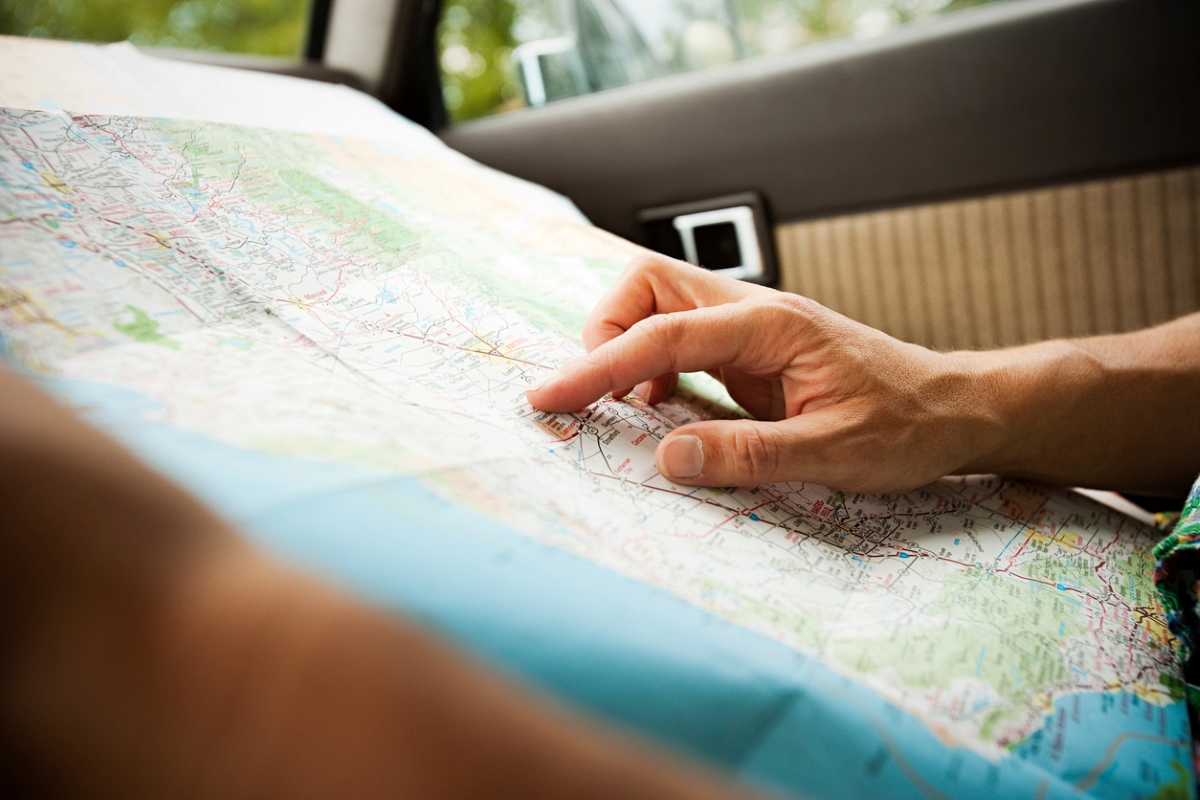
Main roads may not be accessible in the event of an emergency, and familiar routes could be blocked by fire or other hazards. Include a map of your area in your bug-out bag to help you navigate your way out. ReadyforWildfire.org advises individuals to mark two or more evacuation routes in preparation for the unexpected.
Extra Sets of Keys
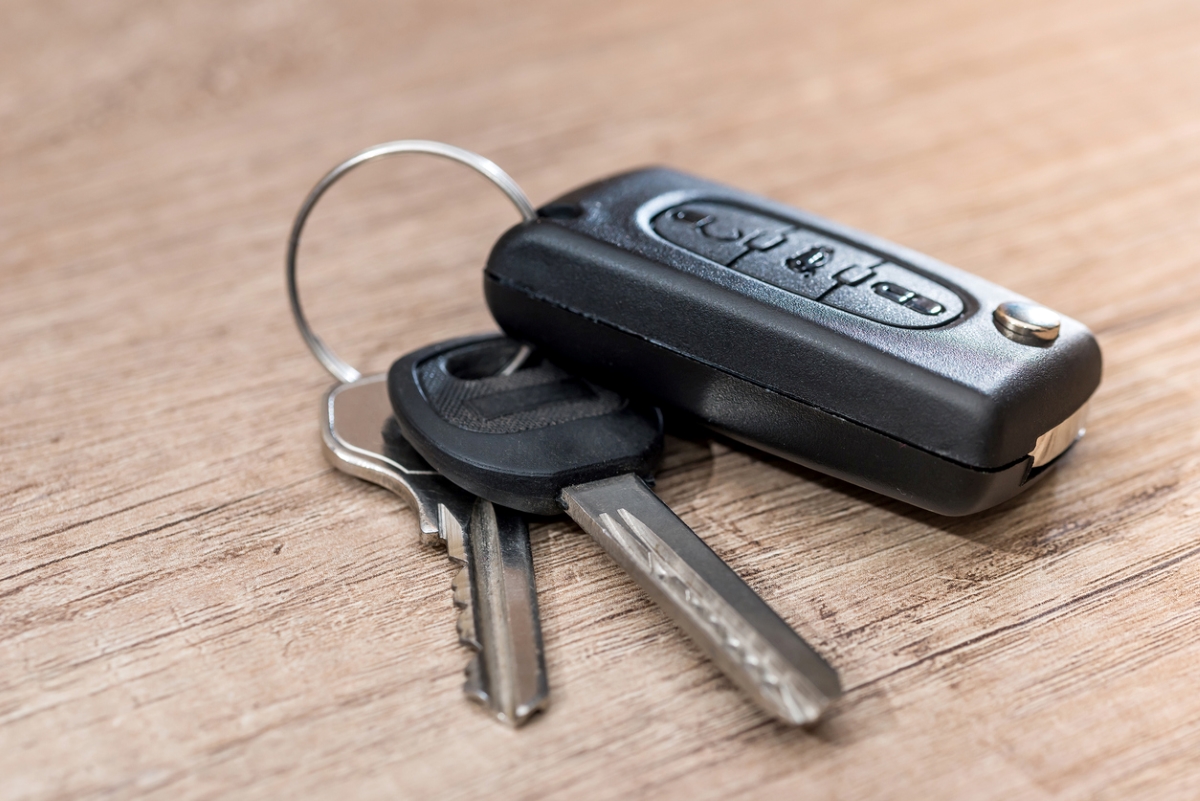
If you’re running out the door in an emergency, you may not remember to grab your house or car keys. Keeping an extra set of keys to your home and car in your bug-out bag will solve this problem and also ensure you have a backup set if one gets lost in the chaos of an emergency.
Copies of Important Documents
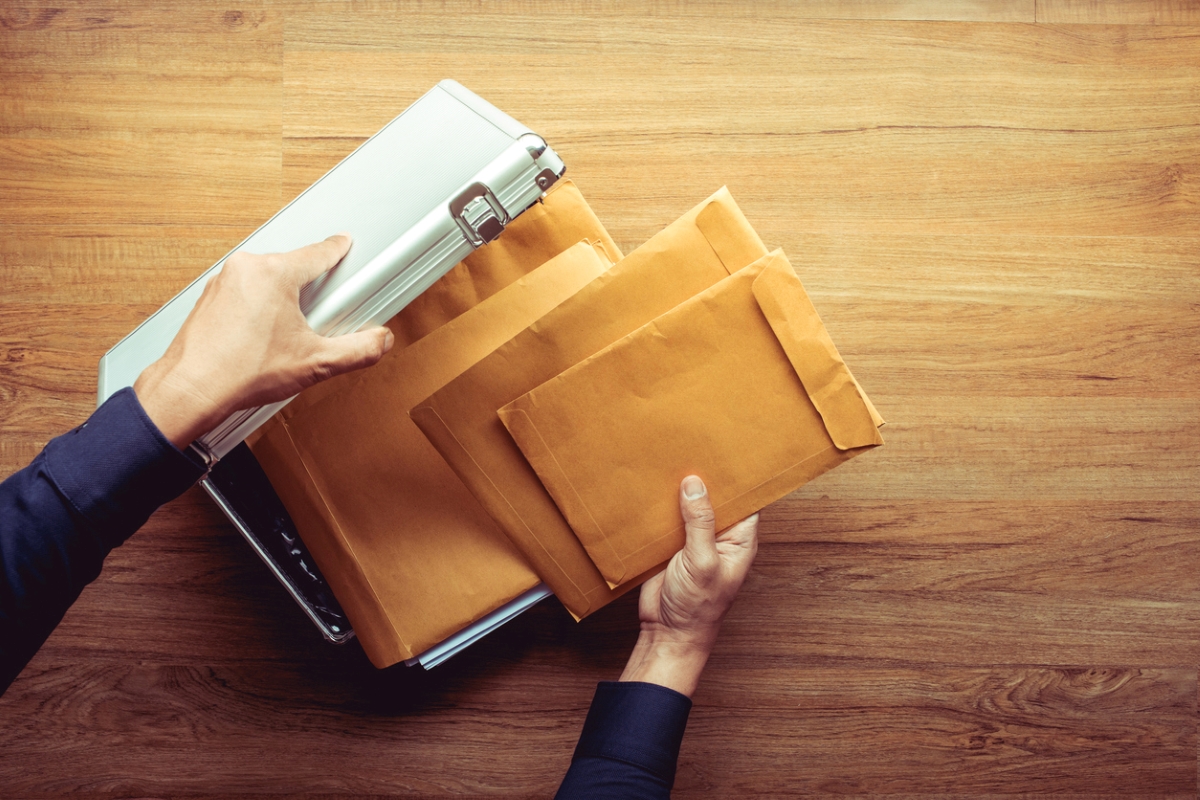
Finally, make copies of any important personal documents and add them to your go bag. Living With Fire suggests including such documents as the deed to your home, bank statements, trust and investment account information, proof of address, passports, birth certificates, insurance policies, medication lists, and important medical history information. You may also want to back up important files on your computer to the cloud or to an external hard drive to pack in the bag.

